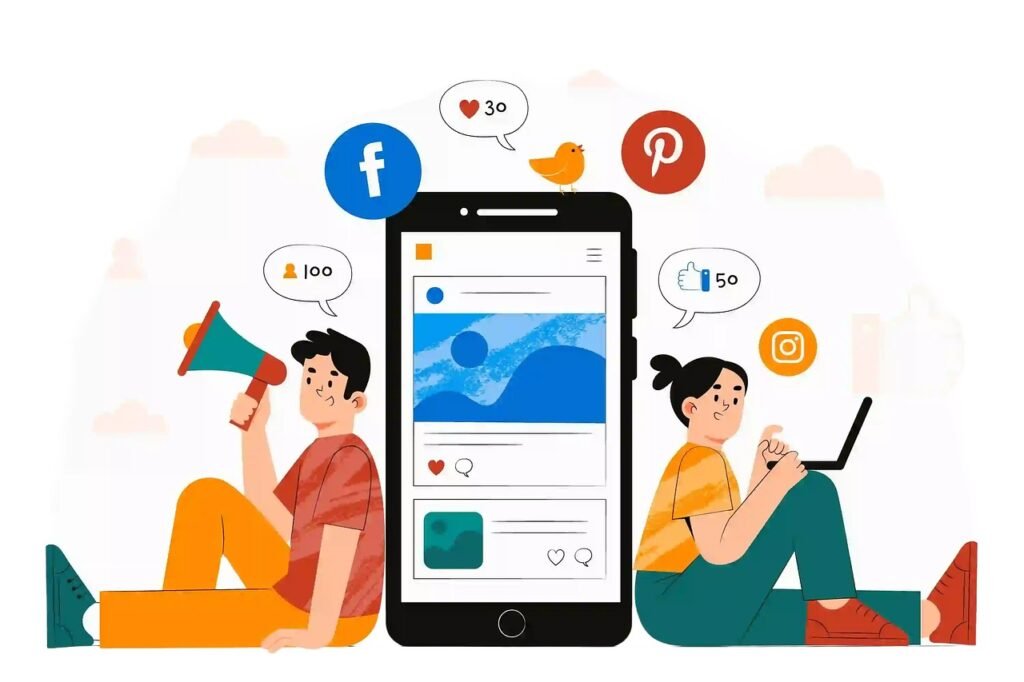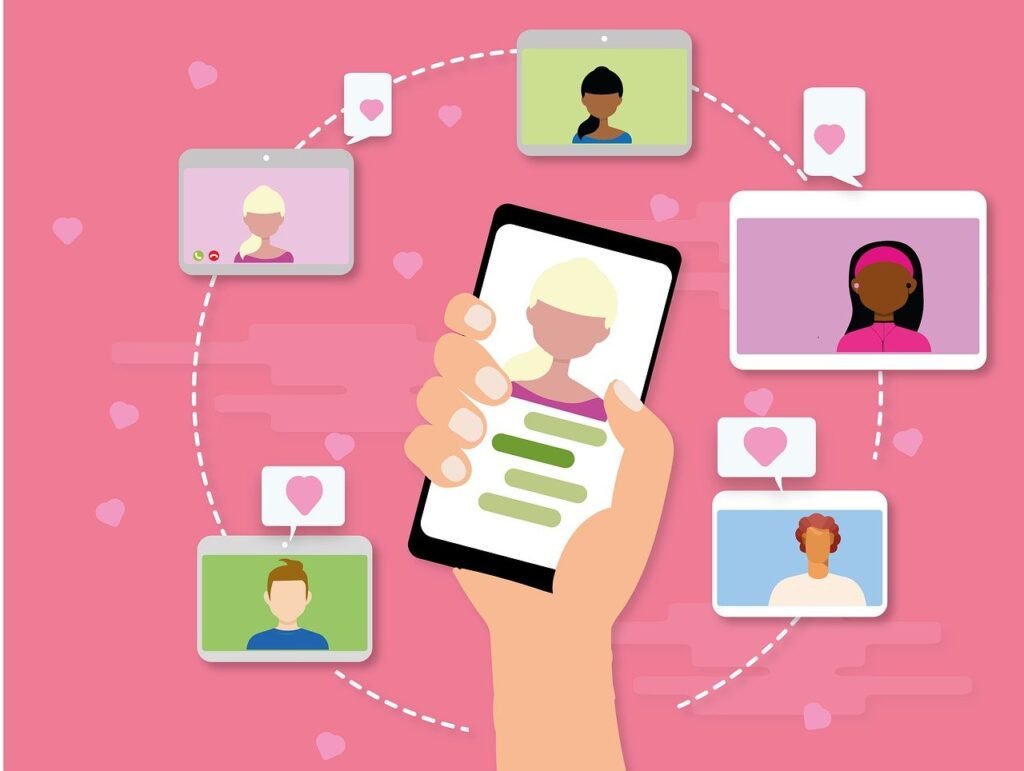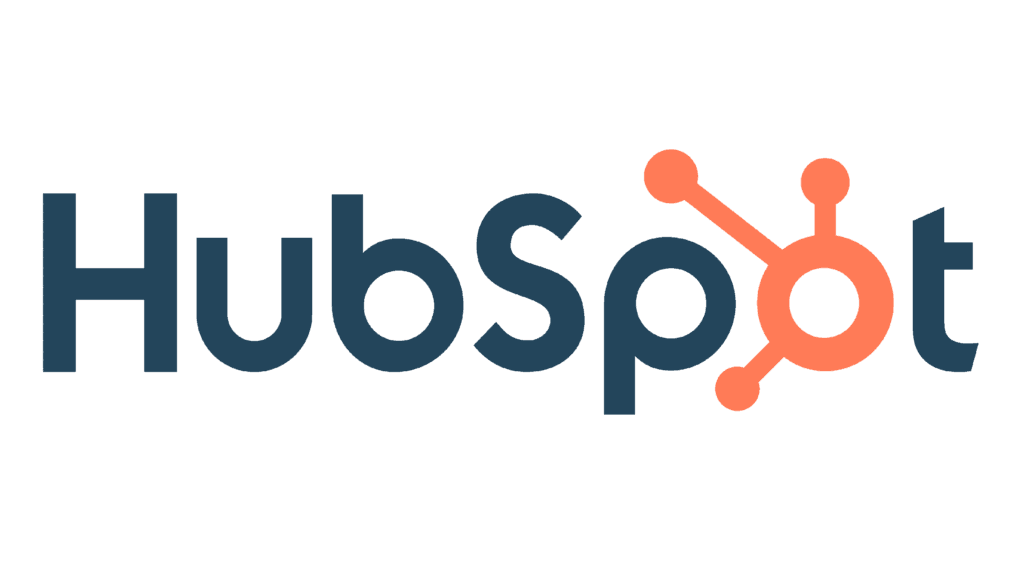This Article has been revised, edited and added to, by Poulomi Chakraborty.
- Email Marketing vs. Social Media Marketing: Which Drives Better E-commerce Sales?
- Optimizing Email Marketing for E-commerce Sales
- Leveraging Social Media Marketing for Enhanced Engagement
- Mastering Platform-Specific Content Strategies
- Creating Interactive and Shareable Content
- Utilizing Live Video for Real-Time Engagement
- Influencer Collaborations to Broaden Reach
- Strategic Use of Hashtags
- Monitoring and Responding to Social Media Mentions
- Analyzing Social Media Analytics to Refine Strategy
- Integrating Email and Social Media Marketing for Maximum ROI
- Advanced Tactics for Leveraging Technology in E-commerce Digital Marketing
- Exploiting the Power of Big Data Analytics
- Implementing Predictive Analytics
- Integrating AI for Enhanced Customer Service
- Using Machine Learning for Dynamic Pricing
- Harnessing Augmented Reality for Virtual Try-Ons
- Leveraging Blockchain for Enhanced Security
- Utilizing IoT for Personalized Marketing and Data Collection
- Tools and Platforms to Enhance Digital Marketing for E-commerce
- Setting Up These Tools
- Conclusion
In today’s bustling digital marketplace, e-commerce businesses are constantly vying for attention. Standing out in this crowded space requires more than just a great product; it demands a strategic approach to digital marketing that can drive sales and foster long-term customer relationships. This article delves into effective digital marketing strategies that any e-commerce business can leverage to boost their sales figures and enhance their online presence.
Email Marketing vs. Social Media Marketing: Which Drives Better E-commerce Sales?

Understanding Email Marketing
Email marketing remains one of the most powerful tools in the digital marketing arsenal. It involves sending targeted, personalized messages directly to the inboxes of potential or existing customers. This strategy’s strength lies in its personalization capabilities and direct approach. Email campaigns can be tailored based on customer behavior, demographics, and purchase history, making them highly relevant.
The Power of Personalization
With tools that enable segmentation and automation, businesses can create specific lists based on user behavior, such as abandoned carts or previously viewed products, and send them personalized emails. This kind of targeted marketing helps in reminding customers of what they’ve left behind or might still be interested in, thereby increasing the likelihood of conversion.
Automation at Its Best
Automation tools in email marketing can trigger emails based on specific actions taken by users. For example, welcome emails, thank you emails, or special discount offers on birthdays and anniversaries can be automated to enhance customer engagement and retention.
Understanding Social Media Marketing
On the flip side, social media marketing utilizes platforms like Facebook, Instagram, and Twitter to promote products and engage with customers. It’s a dynamic environment where brands can create a more relaxed and engaging user experience. The visual nature of social media platforms allows for creative showcasing of products through high-quality images and videos.
Engaging Through Content
Social media marketing thrives on content that engages and entertains, which can lead to greater brand loyalty and customer engagement. It offers a platform for customers to easily share their favorite products and purchases with their network, effectively giving your brand a personal endorsement.
Leveraging User-Generated Content
Encouraging customers to share their own photos and experiences with products can greatly enhance credibility and attract new customers. Social media platforms are ideal for promoting user-generated content, which can act as social proof that persuades others to buy.
Comparing Impact on Sales
When it comes to driving sales, both email and social media marketing have their unique strengths. Email marketing is fantastic for direct sales generation. It’s measurable, allowing marketers to track open rates, click rates, and conversions, providing clear insights into ROI. Campaigns can be fine-tuned and optimized based on detailed analytics to improve performance.
Social media marketing, while not always directly linked to immediate sales, plays a crucial role in building brand awareness and creating an online community. It’s more about engaging with customers in a way that builds trust over time, which can indirectly lead to increased sales.
Which Should You Choose?
Choosing between email and social media marketing depends largely on your business goals. If direct sales and personalized communication are your priority, email marketing could be more beneficial. However, if you’re looking to build brand awareness and create a loyal customer base, social media might serve you better.
Optimizing Email Marketing for E-commerce Sales
Email marketing remains a cornerstone of effective digital communication strategies, particularly for e-commerce startups looking to carve out a niche in a crowded marketplace. Optimizing your email marketing efforts involves a blend of creativity, strategic planning, and ongoing adaptation to meet and exceed customer expectations.
Deep Diving into Advanced Segmentation
Understanding your customer base in depth is crucial. Instead of basic demographic segmentation, consider behavioral segmentation which involves analyzing purchase patterns, browsing behaviors, and customer engagement levels.
This allows for the creation of hyper-targeted campaigns that speak directly to the customer’s needs and current position in the sales funnel. For example, customers who frequently browse but seldom purchase may benefit from an email sequence that educates them about the product benefits or offers a first-purchase discount to nudge them towards conversion.
Crafting Hyper-Personalized Email Campaigns
Hyper-personalization goes beyond inserting a customer’s first name in an email. It involves tailoring the content, offers, and timing of emails based on individual customer data. Utilize dynamic content that changes based on user interaction with previous emails. For instance, if a customer clicked on a link about outdoor gear in a previous email, the next email they receive could feature new outdoor products or a special offer on their previously viewed items.
Timing and Behavioral Triggers
The timing of your emails can significantly impact their effectiveness. Analyze customer data to identify the best times to send emails that coincide with high engagement periods. Implementing behavioral triggers such as sending a cart abandonment email a few hours after a customer leaves your website without completing their purchase can dramatically increase conversion rates. These triggers should be thoughtfully placed to catch customers at a moment of high intent or interest.
Integrating Email with Other Marketing Channels
While email is powerful on its own, integrating it with other marketing channels can amplify its impact. Coordinate email marketing campaigns with social media pushes, aligning the content and messaging across platforms for a unified marketing message. For example, if you’re launching a new product and have teased it on social media, follow up with an email that offers an exclusive pre-order discount to your email subscribers. This not only reinforces the campaign but also makes your email subscribers feel valued.
Continuous Testing and Optimization
The landscape of digital marketing is dynamic, and what works today may not work tomorrow. Continuously test every aspect of your email campaigns—from the subject lines and email designs to the calls to action and segmentation criteria. Use A/B testing extensively to determine what resonates best with your audience and refine your strategies based on real data. Moreover, keep a close eye on the industry trends and adapt your emails accordingly to keep them fresh and relevant.
Emphasizing Mobile Optimization
In today’s mobile-first world, ensuring that your emails are mobile-optimized is essential. This means more than just responsive design; it means considering how the content is displayed, how easy the calls to action are to interact with on a small screen, and how quickly the images load. Mobile optimization can significantly enhance the user experience, leading to better engagement and higher conversion rates from your email campaigns.
By employing these advanced strategies, startup founders can significantly enhance their email marketing efforts, creating more engaging, personalized, and effective campaigns that not only drive sales but also build lasting relationships with customers. Remember, the goal is to make every email feel like it has been crafted for an audience of one.
Leveraging Social Media Marketing for Enhanced Engagement

Social media is an expansive playground for e-commerce startups, offering myriad opportunities to engage with potential customers, build brand loyalty, and drive sales. The key to success lies in understanding the nuances of each platform and crafting a strategy that engages users in meaningful ways.
Mastering Platform-Specific Content Strategies
Each social media platform has its own set of rules and audience expectations. For Instagram, visual storytelling with high-quality images and videos should be the core of your strategy, while Twitter might focus more on timely, snappy communication and engagement through tweets and retweets. Facebook provides a broad canvas for longer posts, customer interactions through comments, and highly targeted advertisements. Understanding these differences allows you to tailor content that fits each platform and resonates with that specific audience.
Creating Interactive and Shareable Content
Engagement thrives on interaction. Creating content that invites user interaction, such as polls, questions, or interactive videos, can significantly increase engagement rates. Encourage users to share their own stories and experiences with your brand as user-generated content, which not only enhances engagement but also provides authentic material for future marketing efforts. This strategy helps build a community around your brand, making customers feel like part of your brand’s journey, which can foster loyalty and repeat business.
Utilizing Live Video for Real-Time Engagement
Live video is a powerful tool to connect with your audience in real time. Use live broadcasts to introduce new products, conduct Q&A sessions, give behind-the-scenes looks into your business, or host live tutorials or demonstrations of your products. These sessions can create a sense of immediacy and exclusivity, encouraging more users to tune in and engage directly with your brand.
Influencer Collaborations to Broaden Reach
Partnering with influencers who align with your brand values can extend your reach into new demographics and increase your brand’s credibility. When selecting influencers, look beyond follower counts; consider their engagement rates, audience demographics, and the authenticity of their content. A well-chosen influencer can introduce your brand to potential customers in a way that feels personal and genuine, which is often more effective than traditional advertising.
Strategic Use of Hashtags
Hashtags are more than just a social media trend; they are a powerful tool for increasing the visibility of your posts. Research and use hashtags that are popular among your target audience, but also create unique branded hashtags for different marketing campaigns. This not only categorizes content for your audience but also helps you track engagement levels and the performance of specific campaigns.
Monitoring and Responding to Social Media Mentions
Active social media monitoring allows you to respond promptly to comments, questions, and complaints. This level of responsiveness is crucial for maintaining customer satisfaction and loyalty. Additionally, monitoring what people are saying about your brand online can provide valuable insights into customer perceptions and areas where your product or service might need improvement.
Analyzing Social Media Analytics to Refine Strategy
Regular analysis of your social media analytics is vital to understand what types of content work best and at what times your audience is most active. Use this data to refine your posting schedule and content strategy. Continuous improvement based on analytics will ensure your social media efforts contribute positively to your overall business goals.
Through these strategies, e-commerce startups can use social media not just as a promotional tool, but as a powerful platform for building meaningful relationships with customers. It’s about creating a dynamic, engaging online presence that attracts new customers and delights existing ones, thereby driving sustainable growth.
Integrating Email and Social Media Marketing for Maximum ROI

For e-commerce startups, integrating email and social media marketing offers a robust strategy to enhance customer engagement and increase sales. This integration ensures a cohesive customer journey, leveraging the strengths of each channel to maximize return on investment. Understanding how to blend these platforms can help startups create more compelling, consistent, and effective marketing messages.
Creating a Unified Brand Narrative
A cohesive brand narrative across email and social media is essential. This unified message helps reinforce your brand identity and value proposition every time a customer interacts with any of your marketing channels. Tailor this narrative to fit the unique formats and strengths of each platform while maintaining a consistent voice and theme.
For instance, if you’re launching a new product line, your emails can provide detailed content about product benefits and specifications, while your social media can show these products in action, used by real people.
Synchronizing Campaigns Across Channels
Timing your campaigns to run simultaneously across email and social media can amplify their impact. Begin with a teaser on social media to build anticipation, followed by an in-depth email on launch day. Supplement this with regular updates on both platforms to keep the momentum going. For sales or special events, send a reminder email and post on social media shortly before the event to boost participation and engagement.
Leveraging Data for Targeted Messaging
Utilize the rich data from both email and social media to refine your marketing efforts. Analyze which type of content receives more engagement on social media and use these insights to inform your email content strategies.
Conversely, track the click-through rates from your emails to see which messages are resonating with your audience, and reflect this in your social media ads and posts. This data-driven approach ensures that your messages are always relevant and engaging to your target audience.
Enhancing Customer Segmentation with Cross-Channel Insights
Deepen your customer segmentation by integrating insights from both email and social media interactions. This combined data offers a more comprehensive view of your customers’ preferences, behaviors, and engagement patterns. For example, a customer who interacts frequently with your posts on social media might respond well to exclusive sneak peeks or behind-the-scenes content in emails. This tailored approach not only improves engagement but also enhances the personalization of your marketing messages.
Automating Engagement to Maintain Consistency
Use automation tools to maintain consistency in your messaging and ensure timely interactions with customers. Automating your email newsletters to highlight content shared on social media can keep your audience engaged across platforms without increasing your workload. Similarly, using social media scheduling tools to promote key messages from your email campaigns can extend their reach and effectiveness.
Optimizing Conversion Paths Across Platforms
Ensure that the path to conversion is smooth and straightforward, regardless of whether it starts on social media or via an email. If a promotional email includes a call to action that leads to a specific landing page, the same landing page should be easily accessible from social media posts related to the promotion. This consistency minimizes friction in the customer journey, improving conversion rates and overall campaign performance.
By strategically integrating email and social media marketing, startups can not only increase their reach and engagement but also create a more streamlined and effective sales funnel. This integrated approach ensures that every touchpoint along the customer journey is optimized for conversion and customer satisfaction, ultimately driving higher ROI for your marketing efforts.

Related: Check out our free SEO suite

Advanced Tactics for Leveraging Technology in E-commerce Digital Marketing
In the rapidly evolving landscape of e-commerce, leveraging cutting-edge technology is crucial for startups looking to differentiate themselves and enhance their market presence. By integrating advanced technological solutions, businesses can create a more personalized, engaging, and efficient shopping experience that drives sales and customer loyalty.
Exploiting the Power of Big Data Analytics
The use of big data analytics can transform how a startup understands and interacts with its customer base. By analyzing large sets of data, businesses can uncover hidden patterns, market trends, customer preferences, and other invaluable insights that can inform strategic decisions. For example, analyzing purchasing behaviors and seasonal trends allows for the optimization of stock levels and marketing strategies, potentially reducing overhead costs and increasing marketing effectiveness.
Implementing Predictive Analytics
Predictive analytics take big data one step further by not just interpreting data, but by forecasting future trends and customer behaviors. This technology can be a game changer for personalized marketing strategies. By predicting what products customers might be interested in before they even begin their search, startups can proactively engage users with personalized product recommendations and tailored email marketing campaigns, significantly enhancing conversion rates.
Integrating AI for Enhanced Customer Service
Artificial intelligence can revolutionize customer service in e-commerce. AI-powered chatbots can handle a large volume of customer inquiries without human intervention, providing instant responses that help to improve customer satisfaction and free up human resources for more complex queries. Moreover, AI can analyze customer service interactions to identify common issues or concerns, providing valuable feedback for improving products and services.
Using Machine Learning for Dynamic Pricing
Machine learning models can dynamically adjust pricing based on various factors such as demand, inventory levels, competitor pricing, and consumer purchasing patterns. This dynamic pricing strategy enables startups to stay competitive and maximize profits by making real-time pricing decisions based on current market conditions.
Harnessing Augmented Reality for Virtual Try-Ons
Augmented reality (AR) offers customers a try-before-you-buy experience, which can be particularly useful in the fashion and home decor sectors. By allowing customers to visualize how a product would look on them or in their home environment, AR can reduce the hesitation often associated with online shopping, thereby reducing cart abandonment rates and increasing sales.
Leveraging Blockchain for Enhanced Security
Blockchain technology can be employed to enhance the security of transactions and to provide transparency in the supply chain. For startups, using blockchain to secure transactions can build customer trust, a crucial component in customer retention and brand loyalty. Additionally, blockchain can be used to authenticate products, which is especially valuable for luxury goods and items where provenance and authenticity are significant selling points.
Utilizing IoT for Personalized Marketing and Data Collection
The Internet of Things (IoT) offers exciting opportunities for e-commerce startups to engage with customers in new ways. Smart devices can collect data on how customers use products, which can then be used to offer personalized marketing messages or to develop new products that better meet customer needs. For instance, a smart fitness device can provide insights into popular workout times and types, which can be used to offer targeted promotions for fitness gear or nutritional products.
By embracing these advanced technological tactics, e-commerce startups can enhance their digital marketing strategies, making them more personalized, efficient, and engaging. This not only improves the customer experience but also drives sales, builds brand loyalty, and sets the foundation for sustainable business growth.
Tools and Platforms to Enhance Digital Marketing for E-commerce

To effectively implement the advanced tactics mentioned earlier, e-commerce businesses can leverage a variety of specialized tools and platforms. Here’s a closer look at some of the best tools that facilitate enhanced digital marketing strategies through AI, automation, analytics, and more.
AI and Machine Learning Tools
HubSpot
HubSpot offers a comprehensive suite of marketing tools that includes AI-powered functionalities such as predictive lead scoring and content personalization. It integrates easily with e-commerce platforms to tailor email marketing campaigns based on detailed customer data.
Adobe Sensei
Part of the Adobe Marketing Cloud, Adobe Sensei uses AI and machine learning to deliver real-time insights into customer behavior. It can help personalize experiences at scale, optimizing both social media content and email marketing efforts.
Marketing Automation Platforms
Marketo
Marketo is a powerful automation platform that excels in campaign management, allowing users to create, automate, and measure engaging campaigns across all digital channels, including email and social media.
Mailchimp
Well-known for its user-friendly email marketing tools, Mailchimp also offers advanced segmentation, automation, and personalization features. Its robust analytics capabilities make it ideal for small to medium-sized e-commerce businesses.
Data Analytics and Segmentation Tools
Google Analytics
An indispensable tool for any digital marketer, Google Analytics provides deep insights into user behavior, traffic sources, and conversions. Its integration with Google Ads and other marketing platforms makes it valuable for refining both social media and email campaigns.
Klaviyo
Klaviyo is a growth marketing platform that specializes in e-commerce. With powerful data science and segmentation features, it helps brands craft more personalized and effective email marketing campaigns.
Augmented Reality (AR) and Virtual Reality (VR) Tools
Augment
Augment offers AR solutions that enable customers to see virtual products in real-time environments through their mobile devices. This tool is particularly useful for e-commerce businesses looking to enhance product visualizations on social media.
Unreal Engine
While traditionally used for game development, Unreal Engine can also be employed to create immersive VR marketing experiences that can be shared via social media or linked in emails to provide a compelling visual demonstration of products or services.
Internet of Things (IoT) Platforms
AWS IoT
Amazon Web Services offers IoT services that can connect different devices and integrate them with your digital marketing tools, enabling you to engage with customers through their connected devices seamlessly.
Feedback and Engagement Tools
Yotpo
Yotpo specializes in e-commerce marketing, providing tools for reviews, ratings, and Q&A that can enhance social proof and drive higher engagement and sales. It integrates seamlessly with social media to leverage user-generated content.
Hootsuite
Hootsuite is essential for managing multiple social media channels. It allows you to schedule posts, engage with followers, and analyze social media performance all in one platform. Its monitoring tools are excellent for maintaining a feedback loop with customers.
Using these tools can dramatically improve the efficiency and effectiveness of your digital marketing efforts, providing richer and more engaging experiences for your customers. Whether you’re enhancing email personalization, boosting social media engagement, or integrating cutting-edge technologies like AR and AI, these platforms offer the capabilities to elevate your e-commerce business.
Setting Up These Tools

Setting up these tools effectively requires a thoughtful approach to integration with your existing systems and a clear understanding of your digital marketing goals. Here’s a step-by-step guide on how to get started with a few of these powerful platforms:
Setting Up HubSpot for E-commerce
- Integration with Your E-commerce Platform:
- Ensure HubSpot integrates seamlessly with your e-commerce platform (like Shopify, WooCommerce, or Magento). HubSpot offers native integrations with several leading e-commerce solutions.
- Sync your customer, product, and sales data with HubSpot to leverage its full marketing automation capabilities.
- Segment Your Contact List:
- Utilize the data synced from your e-commerce platform to segment your contacts into meaningful lists (e.g., frequent buyers, cart abandoners, first-time customers).
- Automate Email Campaigns:
- Create automated email workflows tailored to each segment. For instance, send a welcome series to new customers, re-engagement emails to inactive ones, and special offers to frequent shoppers.
- Track and Analyze:
- Use HubSpot’s analytics to track the performance of your campaigns and make data-driven decisions to refine your strategies.
Implementing Adobe Sensei
- Adobe Integration:
- Adobe Sensei works best when integrated with Adobe Experience Cloud, which includes Adobe Analytics and Adobe Target. Make sure these tools are linked and collecting data.
- Leverage AI for Content Personalization:
- Set up Adobe Sensei to analyze customer behavior and use this data to create personalized content recommendations across your digital platforms.
- Optimize Real-Time Decisions:
- Utilize Adobe Sensei’s AI to make real-time decisions on the best content and offers for individual users, enhancing customer experience and engagement.
Utilizing Klaviyo for Advanced Segmentation
- Platform Integration:
- Connect Klaviyo with your e-commerce platform to import all relevant data. Klaviyo supports direct integrations with platforms like Shopify and BigCommerce.
- Segmentation Tools:
- Use Klaviyo’s powerful segmentation tools to create detailed customer profiles based on their purchasing behavior, browsing activity, and engagement levels.
- Personalize Campaigns:
- Develop targeted email marketing campaigns using Klaviyo’s built-in templates and personalization options to address the specific needs and interests of different customer segments.
- Analyze Results:
- Monitor the performance of your campaigns using Klaviyo’s analytics dashboard. Adjust strategies based on what the data tells you about open rates, click rates, and conversion rates.
Engaging with Hootsuite for Social Media Management
- Setup and Connect Accounts:
- Create a Hootsuite account and connect all your social media profiles to the platform.
- Scheduling and Publishing:
- Use Hootsuite’s dashboard to schedule posts across different platforms. Plan your content calendar to ensure a steady stream of engaging posts.
- Monitor Engagement:
- Utilize Hootsuite’s monitoring tools to keep track of customer interactions on your posts. Use this data to quickly respond to inquiries, comments, and mentions.
- Analyze Social Media Performance:
- Analyze the effectiveness of your social media strategies with Hootsuite’s comprehensive analytics tools. Use insights to tweak and improve your future posts.
Setting up these tools involves a combination of technical setup, strategic planning, and continuous optimization. If you’re not tech-savvy, consider hiring a digital marketing or e-commerce consultant to assist with the initial setup and integration. Once these systems are in place, you’ll be well-equipped to drive more targeted marketing campaigns, enhance customer engagement, and ultimately boost your e-commerce sales.
Conclusion
Digital marketing in the e-commerce space is constantly evolving, necessitating a strategic and well-integrated approach to both email and social media marketing. Leveraging advanced tools like HubSpot, Adobe Sensei, Klaviyo, and Hootsuite can significantly enhance how you engage with your audience and personalize your marketing efforts. By implementing AI-driven personalization, automated campaigns, and robust analytics, businesses can create more relevant, engaging content that resonates with their customers.
Furthermore, embracing emerging technologies like augmented reality and leveraging data from the Internet of Things can set your brand apart in a competitive marketplace. The key is to continuously test, refine, and adapt your strategies based on customer data and feedback. In doing so, you’ll not only meet but exceed customer expectations, driving sales and fostering loyalty in an increasingly digital world. Remember, the right blend of technology and creativity will make your e-commerce business thrive.
Read Next:
- Startup SEO Budgeting for E-commerce: Conversion Rate Optimization
- Startup SEO Budgeting for Local Businesses: Local Search ROI
- Scaling Startup SEO: Budgeting for Increased Website Traffic
- Startup SEO Budget Allocation: Balancing Paid and Organic Strategies
- Startup SEO Budget Allocation: Balancing Paid and Organic Strategies






















Comments are closed.